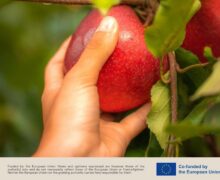Business, aviation and government make historic pact: Full report

Leaders came together on Friday, March 2, in a game-changing summit that set the foundation for a multi-industry collaboration, which could see major changes effected in both South African and intra-continental travel and tourism.
The Barsa Aviation Summit 2018 was an opportunity, which was two years in discussion, that the Board of Airline Representatives of South Africa created to unite aviation, tourism and government, with a view to improving the collaboration between the three sectors, ensuring the various industries’ growth, creation of jobs, as well as ensuring greater contribution to the economy. “The objective,” said Barsa Chairman, Carla da Silva, was to “identify the gaps, encouraging the value chain of aviation to achieve the next level of growth, and work diligently to achieve it”. She told Tourism Update: “It was evident that with all the challenges we’ve had, and with the non-alignment with all the different bodies, whether it’s aviation, whether it’s stakeholders, airports, different bodies, tourism and, of course, government, that it was important for us to collaborate to come together to highlight the importance of us working together, and what are the issues that we want to take forward.”
“If you want to walk fast, walk alone. But if you want to walk far, walk together,” Minister Jeff Radebe.
Three core aspects threaded through the Summit, which was themed the “blueprint for collaboration”: collaboration, communication, and measurable actualisation. The event raised the importance of collaboration within the aviation, tourism and government sectors – from a secure and dependable policy framework, to a strong and supported interconnected business and operating infrastructure – to facilitate stronger communication and solution/information-sharing structures amongst and within the three sectors. The fourth tier was measurable actionables, and an accountability grid to ensure that these vital deliverables are achieved.
Government was represented by Deputy Minister of Transport, Sindiswe Chikungu; Minister of Energy, Jeff Radebe; and newly appointed Minister of Tourism, Derek Hankom – who used the opportunity to deliver his maiden speech in his new position.
Chikungu called the Summit a “momentous occasion” and said the Department of Transport had developed a roadmap to address the shortcomings in the current economic regulatory framework for Airports Company South Africa, the SA Civil Aviation Authority and the Air Traffic and Navigation Services. “The amendments to the respective pieces of legislation are already at advanced stages of approval in the legislative process. Our team in the aviation branch and aviation entities is working with the industry on the development of relevant regulations to enhance the current amended Acts. We have also recently taken, through Nedlac, the review and rationalisation of two other pieces of legislation – the Air Licensing Act No. 115 of 1990 and the International Air Services Act No. 60 of 1993 to ensure complementarity and alignment. In the same spirit, we are wanting to ensure that the industry is better served and that the bottlenecks in the process of, for example, administering the applications for Foreign Operator Permits are eliminated and internationally benchmarked.”
Another vital project raised by Chikungu as pivotal to the growth of intra-continental alignment that will contribute massively towards tourism is the SAATM: “Less than two weeks ago, we launched one of the African Union’s flagship policies – The Single African Air Transport Market (SAATM) in Addis Ababa. The SAATM gives effect to the Yamoussoukro Decision. We are delighted that so far, 23 of the 54 member states of the AU have already agreed to implement SAATM.”
The goals of the Summit were further espoused by Radebe, who said that the Summit filtered directly into the country’s National Development Plan (NDP), an entire chapter of which was dedicated to economic infrastructure that made specific mention of the importance of the transport sector as one of the critical areas to enhance the development of South Africa. He also noted the importance of tangible deliverables, and clear targets and timeframes in which to achieve them.
“The contribution of the tourism indsutry towards economic growth is immeasurables,” Minister Radebe.Government admitted to the need for a collaboration to address challenges and gaps in the existing structure that are throwing up barriers to growth; and committed to supporting the aviation and tourism industries in their efforts to close these gaps, publicly opening a dialogue where the industries can “authoritatively inform us of the challenges of the constraints experienced in the industry. Our role is to work together with you to unshackle the industry from persistent constraints that inhibit growth. We want to walk this journey hand in hand with you to ensure that you run an efficient industry.” (Radebe)
The Summit explored breaking down the barriers in the acceleration of tourism through aviation; the defining of a collaborative path to economic growth and renewal across Africa; and the role of technology in aviation as a cog in the transport and tourism value chain. Major industry leaders across the respective industries stood up in support of the blueprint initiative, including associations such as Business Unity South Africa, Iata, South African Civil Aviation Authority, Airlines Association of Southern Africa, Asata and Air Transport Action Group. Major national and international airline carriers were represented, including SAA, Lufthansa, Air Mauritius, FastJet, EgyptAir, Qantas Airways and Ethiopian Airlines. And business took a strong complementary stance with representation from Econometrix, XL Travel Group, Orenda Advisory and Strategy Group. Acsa and Lanseria International Airport completed the power-group of industry representatives, who either presented or were on panels that deliberated the ins and outs of the broad initiative.
The key areas that were identified as the focus of collaboration, communication and measurable actualisation were identified as the following:
- Collaborative and broadly consultative strategic planning
- Public and private sector alignment
- Seamless traveller experiences
- Innovation
- Safety and security
This came through the acknowledgement of gaps, underservicing within these areas, or opportunities to expand within them. MD of Orenda Advisory and Strategy Group, Tebogo Makgoe, summarised in an illustration, the role player alignment and investment needed to close those gaps.
The question of collaboration between competitors was raised, and how to distinguish what is competitive and what is not, especially in the face of information/data-sharing. Da Silva told TU that this data is accessible, is available, is public information “so we’re not being anti-competitive – we’re talking about data that’s out there”. “The idea is to take all these stakeholders, look at their data, their systems, put it together and agree on the data that we all will use, that will fit into our business models, that will fit into our organisations’ objectives, but help us as well formulate an aligned, visionary approach to what the challenges are. Data is very powerful; it tells a story; and we need to be able to have the same data so that we’re not all going in different directions.” What should be looked at is “how do we take the Acsa statistics, the South African Tourism stats, how do we take our own data, how do we put it together; let’s understand the source, and possibly the period that we are extracting this data (from); what are the key messages, and then how do we put that into our individual strategies. And then we report back when we do meet. And this is why regular conversations and ongoing meetings are so imperative because we need to discuss this data and say ‘how do we take this data and execute on it?’. If we look at this data we can identify where the gaps are, we can see where do we need more connectivity, more productivity, where do we need to invest more energy, what do we do to bring everybody together. And the data is really the answer, but at the moment it’s fragmented, it’s non-aligned, and we really need to bring it together.” Da Silva said that Barsa would possibly be looking into an existing system that’s a success story, whereby data could be centralised and trifecta players would all buy into it and extract data from it. “Perhaps a centralised intranet or database of some sort that we can all plug into through a shared drive system.” An outsourced organisation may also be considered to develop an app of some sort where all players could plug into, and they would all contribute towards financially as it would be for the success of the entire value chain.
Where to from here? Barsa promised that in two weeks’ time a summary of the event, the speeches and the topics discussed would be released to all in attendance at the Summit. From there, priorities would be set. Da Silva told TU that all action items and time frames could be input into the centralised system, which in effect would institute peer accountability through transparent and industry-wide access of data, actionables instituted by the collaboration, and status of roll-out of each representative in the value chain.
It’s easy to talk the talk, but as June Crawford, CEO of BARSA and one of the pivotal drivers of the blueprint initiative, says, the change-stakeholders need to “walk the talk”.
Radebe concludes: “A constant liaison between decision-makers in both public and private sectors helps to ensure that the decisions that are taken are duly implemented. It is even more so when you have an integrated plan that provides a clear framework on the implementation of our development strategies.”
source: tourismupdate.co.za




